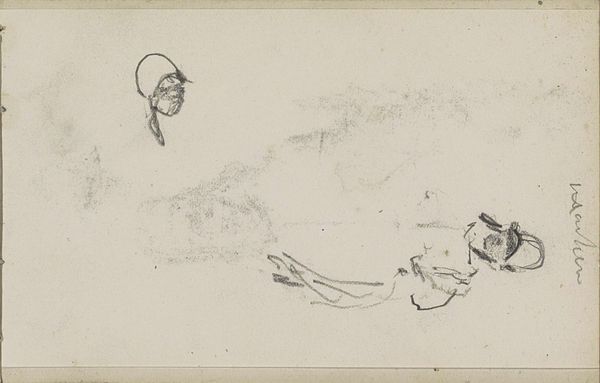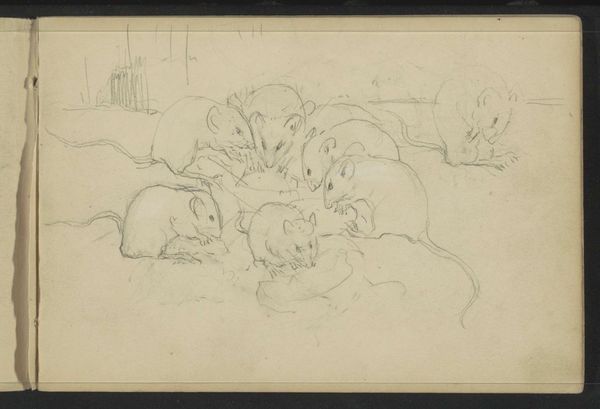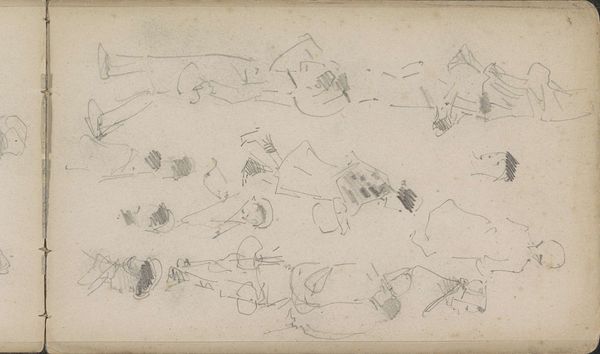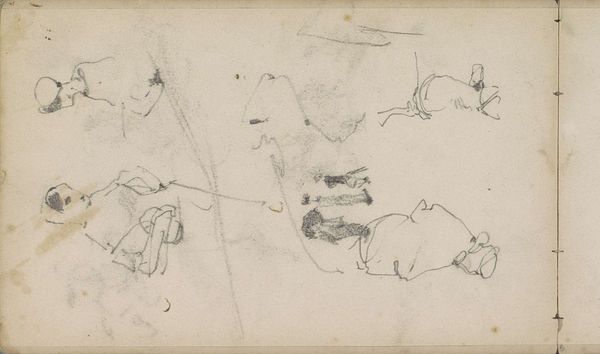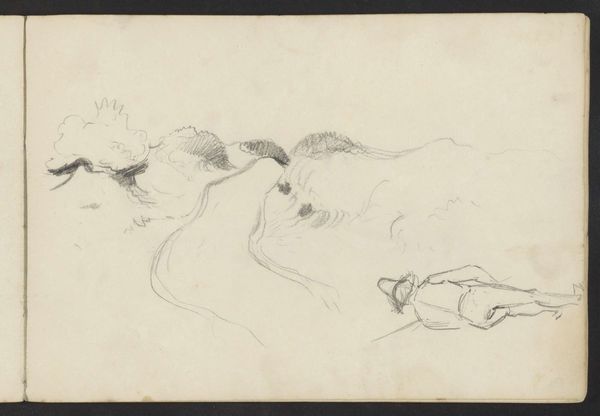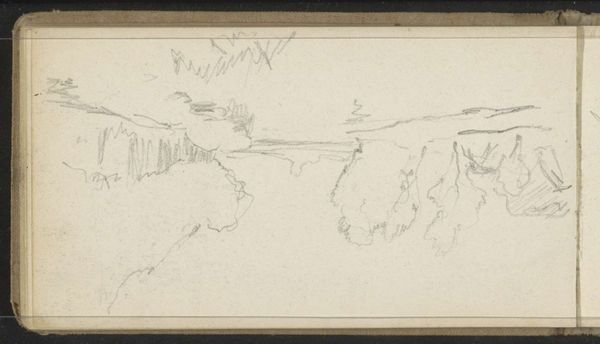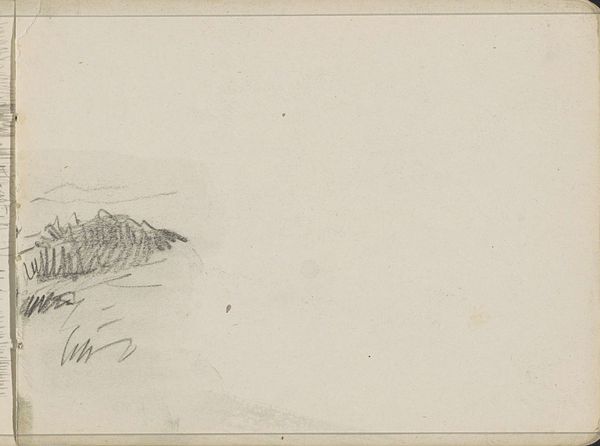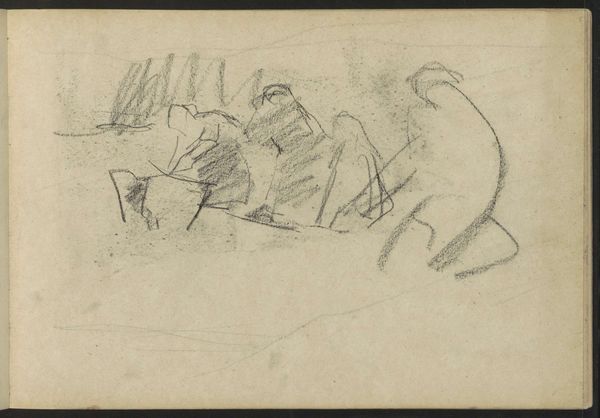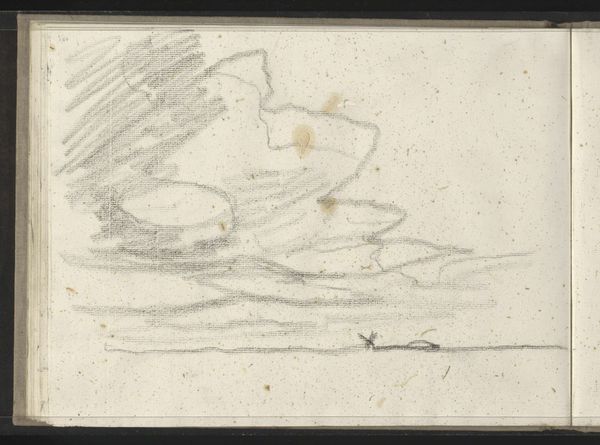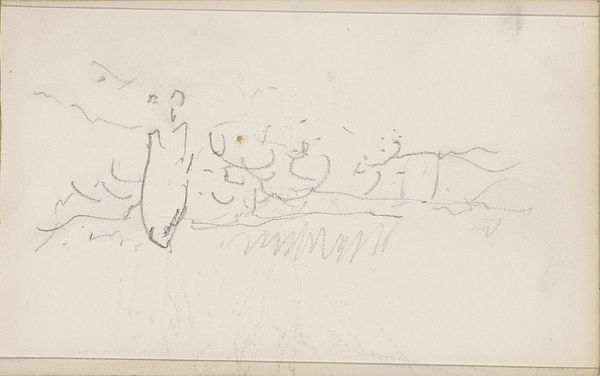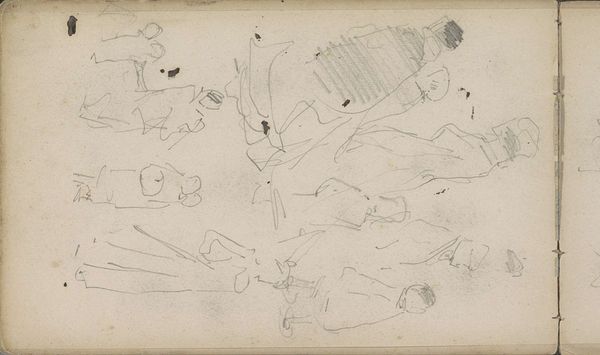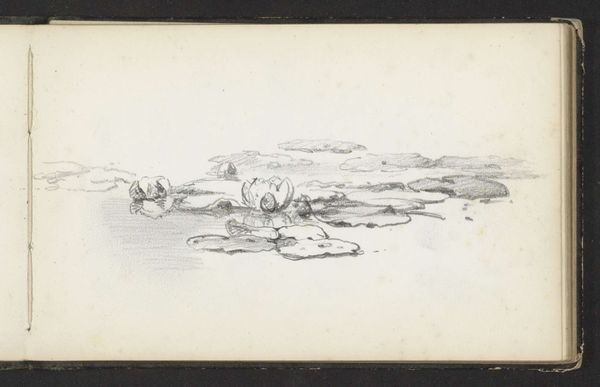
Dimensions: height 104 mm, width 179 mm
Copyright: Rijks Museum: Open Domain
Curator: This sketch, simply titled "Waterlelies," created by Willem Cornelis Rip around 1895, seems to capture a fleeting moment in nature using primarily pencil on what appears to be laid paper. It feels very immediate. What strikes you most about this work? Editor: I’m intrigued by how such simple materials – just pencil and paper, really – can create such a delicate impression of light on water. How do you see the artist engaging with these ordinary materials to achieve this effect? Curator: Well, the pencil itself is a processed material. We might consider where Rip sourced his pencils and paper from, what that suggests about their market availability at that time and how it fits with impressionistic ideals of depicting "modern life" through a readily accessible tool. Think about the labor involved – the graphite mined, the wood processed for the pencil casing, the rags pulped to make the paper. Does seeing the finished product encourage a conversation about all those individual processes? Editor: That's a great point. It’s easy to forget all of that when we’re looking at the finished art. But the pencil, the tool itself, played a critical role, wouldn't you say? Could he have made a similar artwork with charcoal? Curator: Possibly. Charcoal would require its own unique production methods—controlling the burning of wood. But this is impressionism, which moves beyond pure representation and strives to catch the immediacy of a particular moment, with quick marks, which, in my opinion, is better achieved with a pencil as the final work feels a little more crisp and polished than with charcoal. Do you think the choice of materials reflects a democratic or an elitist aesthetic? Editor: I’d never thought of it that way before! Now I understand it's not just the finished product that's important, but all the hands and processes that contributed to its creation. It definitely gives me a new appreciation for the work. Curator: Indeed. Understanding the material conditions of art production allows us to read artworks not just as aesthetic objects, but as products of a complex social and economic system.
Comments
No comments
Be the first to comment and join the conversation on the ultimate creative platform.
